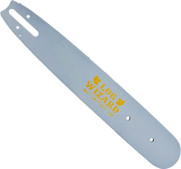
Spherical Crown Densiometer | Convex or Concave | Forest Densiometers
- Brand
- Forest Densiometers
- SKU:
- DENSIOMETER
- Availability:
- Available for order
Spherical Crown Forest Densiometer | Convex or Concave | Model A & Model C
Denisometers are used to determine overstory canopy density and are helpful when establishing spacing standards in forest thinning and determining light requirements for regeneration. Originally, the densiometer was developed to characterize and quantify canopy density for representative forest sites where numerous parameters such as tree size (height, girth, and growth rate), tree spacing, soil types, slope and slope orientation, elevation and others were determined. The early work was done as part of a nationwide study to develop a series of guidelines to improve the efficiency of forest management. The goals were to maximize yield of these renewable natural resources at maturity and to aid management decisions that would help the forest stands approach a balanced ecological system.
The Spherical Densiometer consists of either a convex (Model A) mirror or a concave (Model C) mirror with 24 - 1/4" squares engraved on the surface. The design is such that the operator views the same degree of arc overhead regardless if the user is in a low lying canopy area or a mature stand of high canopy timber. The Spherical Crown Densiometer comes housed in a 3" x 3" Hardwood case with a built in leveling bubble and instructions included.
The densiometer was originally developed and published by Dr. Paul E. Lemmon (1956 and 1957). In these papers, he discussed the statistical validity behind the accuracy and repeatability of the data collected using the spherical densiometer. This instrument has been extensively tested over the past 60+ years by numerous foresters and forestry technicians on stands of Ponderosa Pine, Lodgepole Pine, and Douglas Fir. The pioneering work was done mainly in the Pacific northwest; however, subsequently the instrument has been used for measuring overstory density throughout the U.S and internationally.
USING the Spherical Crown Densiometer: Each square of the grid on the Densiometer is then equally subdivided mentally into 4 smaller squares (1/8" X 1/8") and represented by an imaginary dot in the center of each of the smaller squares. Thus a total of 96 dots representing smaller square areas can then be counted within the grid. Once the representative forest site has been selected for measurement, the user holds the instrument level and far enough away from his/her body such that the operator's head is just outside the grid. The operator can then count the number of dots representing the smaller (1/8" X 1/8") square areas of CANOPY OPENINGS, up to a total of 96. The number determined is then multiplied by 1.04 (1/96) to obtain the percent of overhead NOT OCCUPIED by canopy. The difference between this percentage and 100% is the estimated overstory density in percent.
Four readings are taken about a reference tree in each site area and averaged. The operator should be positioned with his/her back toward the reference tree, and move about the reference tree facing North, East, South and West. "The reference tree in each site represents a typical dominant or co-dominant species in the stand. The points detected around the reference tree should be far enough away [from the reference tree] so that the crown of the reference tree is just outside the overstory area being estimated" (Lemmon, 1956). The statistical accuracy and repeatability of the instrument is based on taking four readings, using up to 96 dots representing the smaller (1/8" X 1/8") squares for up to a total of 384 smaller squares per site (96 X 4), and then averaging all four readings at the different orientations about the reference tree. Obviously, in a forest environment, you will be counting considerably less than 96 dots representing the smaller squares, so the exercise is a lot less laborious than it might first appear. The denser the overstory canopy, the fewer dots you will have to count since you are counting the 1/8" X 1/8" areas in which you can see sky in the major portion of each of the smaller squares. With a little practice, you will find that the data can be gathered quickly and with repeatability using the same or different operators.
You can use another trick that will speed up your data collection in OPEN FORESTS where greater than half of the canopy is open to the sky. You can reverse the process and just count the smaller square areas (1/8" X 1/8") that are covered by the canopy. If you then multiply by 1.04 you will obtain the estimated overstory density directly in percent.
The Spherical Densiometer is designed for rugged field use (rain or shine), yet compact and light weight enough to fit into a shirt or coat pocket for ease of transport. When treated with respect, this little instrument has given years of field service. Requiring in excess of 22 individual operations, each instrument box is handmade of walnut and may have some unique "character" as might be expected using a natural wood product. Attempts have been made to keep knots and other blemishes to a minimum; however, they were incorporated when they added beauty to the box and did not compromise the integrity of the instrument.
The Spherical Crown Densiometer comes with a LIFETIME WARRANTY: If a spherical densiometer becomes inoperable, it will be repaired or replaced it at no cost to you, beyond the cost of shipping the damaged instrument in, provided the densiometer has not been severely abused.














